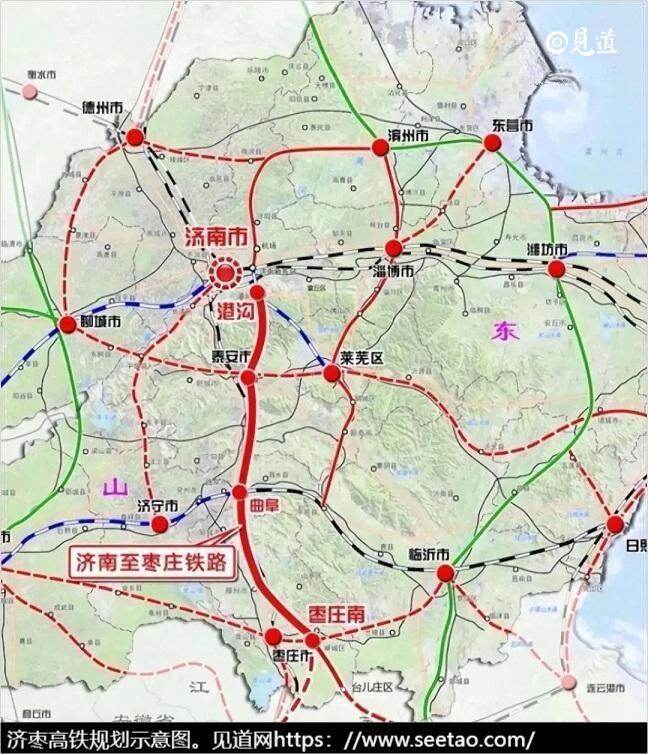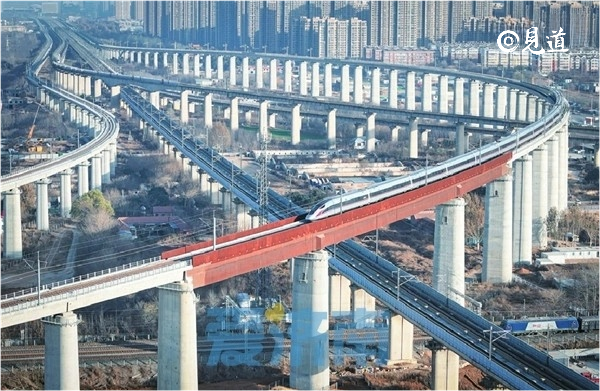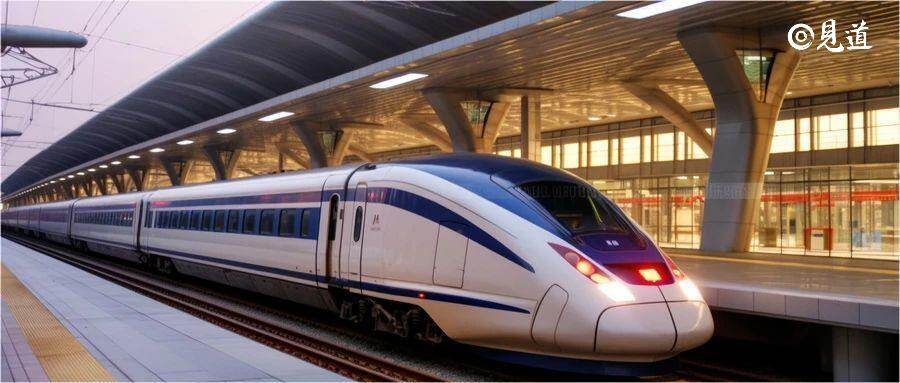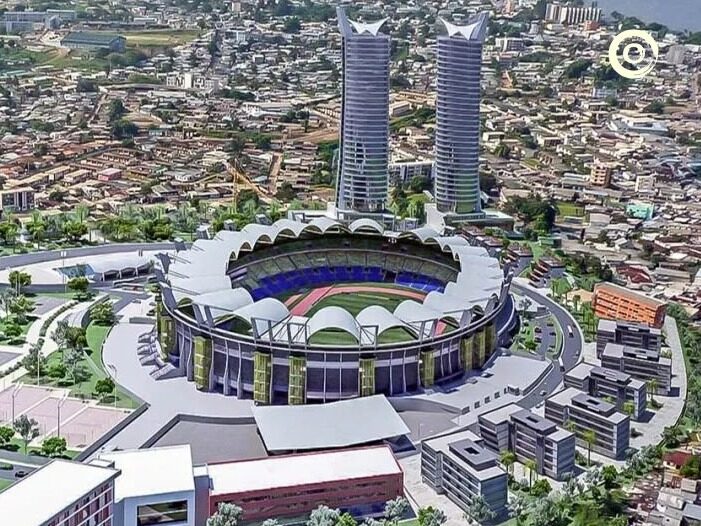- By 2035, the total scale of Shandong high-speed rail will reach 5700 kilometers, covering over 93% of the county area in the province
- The development prospects of Shandong high-speed rail are very broad, and in the future, we will continue to improve the high-speed rail network in the province, improve the quality and efficiency of high-speed rail construction
With the improvement of people's living standards and the increasing demand for travel, high-speed rail, as a fast and convenient mode of transportation, will be increasingly favored by people. On the morning of December 30, 2023, the construction of the Shandong section of the Weisu high-speed railway began. As the concluding section of the Beijing Shanghai Second Line, the Shandong section of the Weisu high-speed railway adds a rich touch of color to the Shandong on the track. On December 16th before this, the mobilization meeting for the construction of the Jizao high-speed railway was held, marking a new stage of comprehensive construction for the project. This also indicates that in 2024, the construction of high-speed rail in Shandong will further accelerate and make the blueprint for Shandong on the track clearer.

The construction of two new high-speed railways is of great significance
According to the national "Medium - and Long Term Railway Network Plan", there are two lines in the "Eight Verticals and Eight Horizontals" high-speed railway for the Beijing Shanghai corridor. One is the already operational Beijing Shanghai high-speed railway, which runs from Beijing Tianjin Jinan Nanjing Shanghai (Hangzhou). The Weifang Suqian high-speed railway is the second passage between Beijing and Shanghai in the national "eight vertical and eight horizontal" high-speed railway network, running from Beijing Tianjin Dongying Weifang Linyi Huai'an Yangzhou Nantong Shanghai. The Beijing Shanghai Second Line consists of projects such as the Beijing Tianjin Intercity Railway, Tianjin Weifang, Weifang Suqian, Xusu Huaiyan Railway Suqian Huai'an section, Lianhuaiyang Town Railway Huai'an Yangzhou section, and the North Yangtze River High Speed Railway Yangzhou Shanghai section. Among them, the Beijing Tianjin intercity railway, the Suqian Huai'an section of the Xusu Huaiyan Railway, and the Huai'an Yangzhou section of the Lianhuaiyang Town Railway have been opened to traffic, and construction of the Tianjin Weifang Railway has begun.

The Jizheng high-speed railway has been completed and opened to traffic
In this context, the construction of the Shandong section of the Weisu high-speed railway has attracted widespread attention and is of great significance. For Shandong, with the promotion of the "Beijing Shanghai Second Line", Binzhou and Dongying will both be connected to the national high-speed rail network, and the transportation of the provincial capital economic circle will achieve a qualitative leap. After the completion of the "Beijing Shanghai Second Line", Shandong has added a north-south high-speed rail corridor that directly connects to the Yangtze River Delta region. This will not only bring cities along the line into the Beijing Tianjin Hebei Economic Circle and the Yangtze River Delta Economic Circle, but also promote the rapid flow of people, logistics, information, and capital, building a "high-speed rail economic corridor".
The construction of the Weisu high-speed railway is urgent in alleviating the tight capacity of the Beijing Shanghai high-speed railway. Based on existing data, the Beijing Shanghai high-speed railway is the high-speed railway line in China with the most train services, the highest passenger flow density, and the highest occupancy rate. The annual passenger volume exceeds 200 million, and the departure interval during peak hours is only 4 minutes, with a density comparable to that of the subway. Obviously, the capacity of the Beijing Shanghai high-speed railway has exceeded saturation, but the demand for capacity between Beijing and Shanghai is still increasing. The construction of the "Beijing Shanghai Second Line" is a necessity of the times and is imperative.
The Weisu high-speed railway has also filled the high-speed rail gap in Shandong. Passing through three cities: Weifang, Rizhao, and Linyi, there are nine stations along the way, including Weifang North, Anqiu, Zhucheng West, Wulian North, Juyi, Yinan, Linyi North, Lanling, and Tancheng West. Among these stations, Zhucheng, Lanling, Juxian, Yishui, and others are all populous counties (cities) with a population of millions, and so far there is no high-speed rail connection. The construction of the Weisu high-speed railway has fulfilled the high-speed rail dreams of residents along the line, making the "capillaries" of the high-speed rail line denser and longer, and radiating more passenger sources.
It is worth mentioning that the simultaneous construction of the Weisu high-speed railway Qingdao connection line will open up a fast channel between the Jiaodong Peninsula and the Yangtze River Delta, Beijing Tianjin Hebei. The Jiaodong city, represented by Qingdao, is expected to further expand its geographical advantages and become an "invisible beneficiary".

As an important component of Shandong's high-speed rail network, the construction of the Jizao high-speed rail is equally significant. It is a high-speed railway project that mainly undertakes intercity and tourism passenger flow along the line. It starts from Licheng Station in Jinan hub in the north, passes through Tai'an and Jining in the south, and ends in Taierzhuang District, Zaozhuang City, with a total length of about 268.564 kilometers. Among them, 263.314 kilometers of new main lines were built, with a total length of 213.946 kilometers of bridges and tunnels, accounting for 81.28% of the total length of the line. 62 new bridges and 18 tunnels will be built along the entire line, with a total of 10 stations including Jinan East, Licheng, Nanshan, Tai'an East, Ningyang East, Qufu East, Zoucheng, Tengzhou East, Zaozhuang South, and Taierzhuang. After completion, it will be connected to the Rilan high-speed railway channel, Shiji high-speed railway, Jiqing high-speed railway, Jiaoji high-speed railway, Jibin high-speed railway, etc., which will play an important role in strengthening regional road network connectivity and enhancing rapid exchanges between Rizhao, Linyi, Jining, Heze, and the provincial capital Jinan; It is of great significance to promote regional tourism development and support the high-quality economic development of the whole province.
Currently, Shandong Province is accelerating the construction of four high-speed railway lines, among which the Weiyan high-speed railway is expected to be completed and opened to traffic in the first half of 2024. In the future, Shandong Province will continue to promote transportation construction, improve the province's "four horizontal and six vertical" high-speed rail network, and comprehensively open up fast channels with important national economic zones. By the end of the 14th Five Year Plan period, the total length of high-speed rail in the province will reach 4400 kilometers, achieving the goal of connecting cities with high-speed rail and basically forming a modern high-speed rail network covering the entire province. It is expected that by 2035, the total scale of Shandong's high-speed rail network will reach 5700 kilometers, with a coverage of over 93% in county areas. The number of inter provincial high-speed rail channels will increase to 15, and the proportion of high-speed rail with a speed of 350 kilometers per hour will increase to over 80%, forming a new pattern of "provincial capital ring, peninsula ring, and inter provincial ring". Editor/Zhao E
Comment
 Praise
Praise
 Collect
Collect
 Comment
Comment
 Search
Search














Write something~